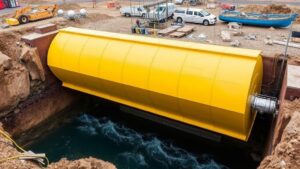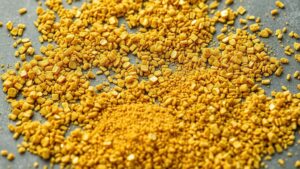Understanding the Role of Copper in Polymetallic Vein Systems
Understanding the Role of Copper in Polymetallic Vein Systems
Copper plays a significant role in the formation and economic viability of polymetallic vein systems. These systems, characterized by the simultaneous occurrence of multiple valuable metals, constitute vital resources for both mining operations and technological applications. This article delves into the geological processes that lead to the formation of these vein systems, the specific role that copper plays, and the implications for mineral exploration and extraction.
Geological Formation of Polymetallic Vein Systems
Polymetallic vein systems typically form in tectonically active regions and are associated with hydrothermal processes. As magma intrudes into the Earth’s crust, it releases hot mineral-rich fluids. When these fluids interact with surrounding rocks, minerals precipitate, leading to the formation of veins containing varied metals.
These systems often contain a mixture of metals such as:
- Copper
- Lead
- Zinc
- Silver
- Gold
The presence of copper is particularly notable due to its properties and prevalence in several types of polymetallic deposits, including the well-studied porphyry and epithermal deposits.
The Economic Importance of Copper
The economic significance of copper within polymetallic systems is profound. According to the United States Geological Survey (USGS), copper is one of the most widely used industrial metals, with applications across electrical wiring, plumbing, and electronics. In 2021, global copper demand surpassed 24 million metric tons, a trend that continues to grow with increasing global electrification and renewable energy initiatives.
Also, copper often acts as a guide for exploration. When found in conjunction with other metals, it can indicate the presence of richer mineral deposits. For example, the famous Grasberg mine in Indonesia is an exemplary case, where significant amounts of copper are found alongside gold and silver, making it one of the worlds largest copper-gold deposits.
Geochemical Behavior of Copper in Hydrothermal Conditions
Coppers geochemical behavior plays a crucial role in its distribution within polymetallic veins. In hydrothermal environments, copper can exist in several forms, most notably as cupric (Cu²âº) or cuprous (Cuâº) ions, depending on temperature, pressure, and the presence of complexing agents like chloride and sulfate.
For example, at higher temperatures, copper is often fairly soluble and can travel significant distances through hydrothermal systems. Upon cooling or encountering certain conditions (such as changes in pH or the presence of other metals), copper may precipitate, forming economically viable ore deposits.
Environmental Considerations
While copper extraction provides substantial economic benefits, it is critical to consider the environmental implications. Mining operations can lead to soil and water contamination due to the leaching of heavy metals. Also, the energy-intensive process of extraction contributes to carbon emissions. Enhanced regulation and sustainable mining practices are essential to mitigate these impacts.
For example, companies are exploring hydrometallurgical processes, such as bioleaching, which utilize microorganisms to extract metals like copper from ores with reduced environmental footprints.
Conclusion
In summary, copper serves as a cornerstone in the context of polymetallic vein systems. Its geological formation, economic significance, geochemical behavior, and environmental consequences shape both mineral exploration and extraction practices. Understanding these dynamics is vital for the responsible management of natural resources, seeking to balance economic interests with environmental stewardship.
Actionable Takeaways
- Recognize the diverse applications of copper and their implications for future demand.
- Investigate the role of copper in guiding exploration efforts in polymetallic deposits.
- Stay informed about sustainable mining practices to minimize the environmental impact of extraction operations.



